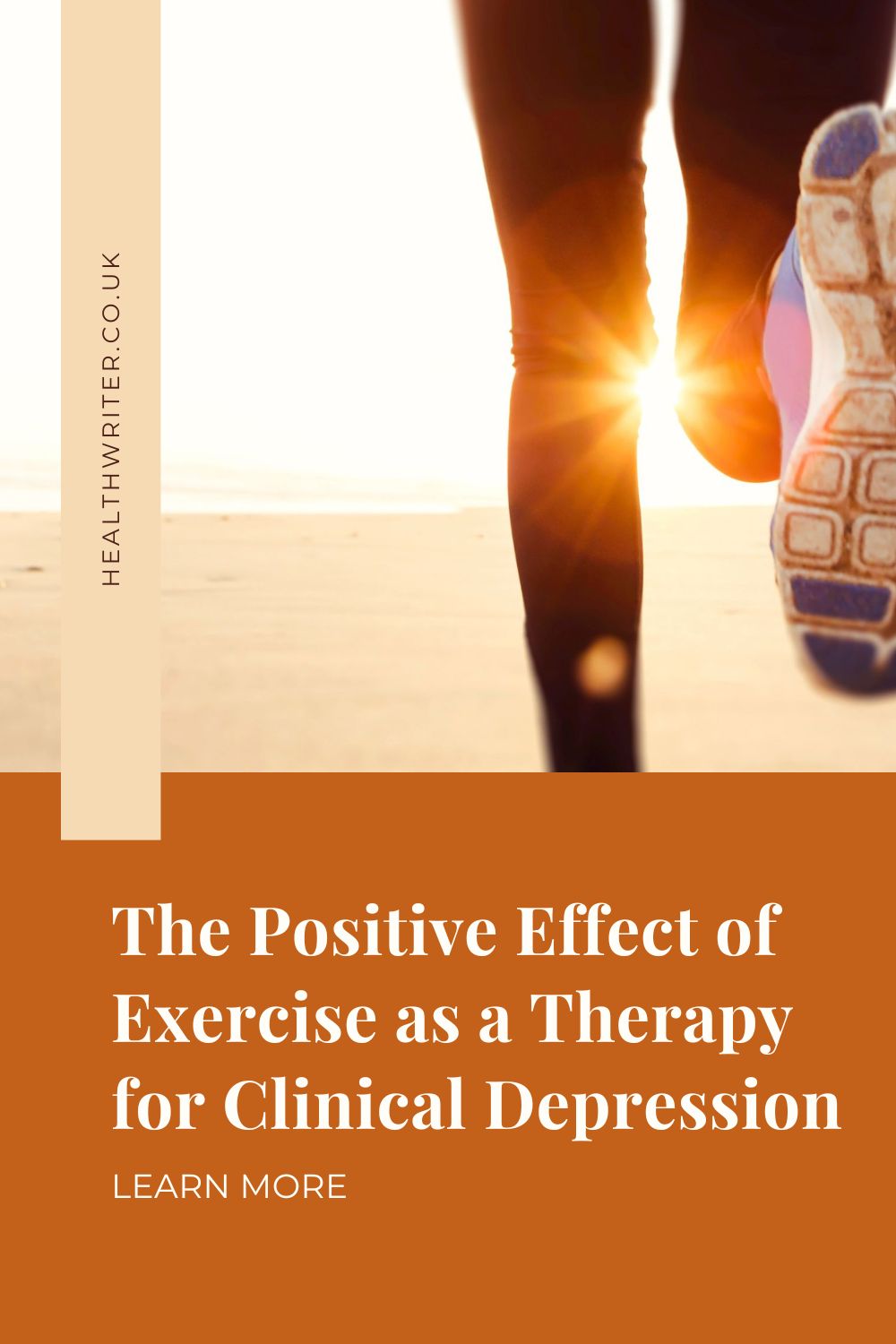This article, ‘The Positive Effect of Exercise as a Therapy for Clinical Depression’, was originally published in the Clinical Focus section of Nursing Times magazine. It has been double-blind peer-reviewed and cited numerous times in other published research.
The article discusses the relationship between depression and exercise, and how physical exercise may be used to alleviate symptoms of depression alongside conventional antidepressant drugs and psychological therapies.
The Positive Effect of Exercise as a Therapy for Clinical Depression
VOL: 101, ISSUE: 13, PAGE NO: 28
Sharon Kirby, MSc Sports Science, BSc Psychology, is a freelance writer
The positive effect of exercise on physical health has been given much attention. Research has shown it is also beneficial to mental health, and there is increasing evidence to suggest it could be used as an alternative therapy to antidepressants and psychotherapy.
Depression is a widespread problem, and is one of the top three leading causes of disability, with the average GP seeing one depressed patient during each surgery.
The number of new prescriptions for antidepressant medication more than doubled between 1990 and 1995 (Clinical Standards Advisory Group, 2000).
In an analysis of the uptake of health services, sickness benefit claims and the number of deaths of patients with depression, Thomas and Morris (2003) estimated the total cost of adult patients with depression in England during 2000 was over £9bn.
Direct treatment costs (hospital contacts, out-patient consultations, general practice consultations and drug treatment) amounted to £370m.
Treatments for Depression
The most frequently prescribed treatment for depression is antidepressants, and this is usually the only treatment offered (Clinical Standards Advisory Group, 2000).
However, while they can be effective they can also have unpleasant side-effects, meaning many people prefer psychological therapy to drug treatment. Unfortunately, due to the high demands for counselling, there may be excessively long waiting lists for such treatment.
The benefits of exercise for physical health are well recognised. However, the positive effect exercise can have on mental health, in particular depression, anxiety, negative mood and low self-esteem is not well promoted.
The Relationship Between Depression and Exercise
Dimeo et al (2001) studied the effect of a short-term aerobic training programme on 12 clinically depressed patients. The training programme consisted of daily walking on a treadmill for 10 days following an interval training pattern.
At the end of the programme depression scores of the patients were significantly reduced.
In a 10-week study of 86 clinically depressed patients, who were aged 53 and over and who had not shown a sustained response to antidepressants, Mather et al (2002) compared the effect of health education talks and exercise on depression.
Half the patients attended 45-minute exercise classes twice weekly where they performed weight-bearing exercise to music, and the other half (the control group) attended twice-weekly health education talks.
Both groups showed a modest reduction in depressive symptoms at the end of the 10 weeks, with significantly more patients in the exercise group achieving a response.
Blumenthal et al (1999), found exercise to be as effective as antidepressants in reducing depression.
156 clinically depressed patients aged 50 and over, who were not taking antidepressant medication, were assigned randomly to a program of aerobic exercise, antidepressants or combined exercise and medication for 16 weeks.
The aerobic exercise sessions were carried out three times per week and consisted of cycle ergometry or brisk walking/jogging. Patients in all three groups had a significant reduction in depressive symptoms, although patients receiving medication alone showed the fastest response.
In a follow-up study, Babyak et al (2000) assessed the depressive status of the patients six months later. They found patients who had been in remission at the end of the 16 weeks were significantly less likely to have relapsed if they were in the exercise group than if they were in the medication or combination group.
Patients who engaged in regular aerobic exercise during the six-month follow-up period were less likely to be classified as depressed at the end of that period.
Craft and Landers (1998) performed a meta-analysis of 30 studies and found that exercise of both an aerobic and non-aerobic nature was effective in improving symptoms of depression.
Another meta-regression analysis of randomised controlled trials (Lawlor and Hopker, 2001) also found no association between the type of exercise and its effect on depressive symptoms, suggesting aerobic and anaerobic exercise have a similar effect.
It would seem structured group exercise sessions appear to reduce symptoms of depression. Exercise has also been found to be as effective as other treatments when compared to psychotherapy and behavioural interventions (Craft and Landers, 1998).
However, there have been several reviews criticising some studies (Wayne et al, 2003; Lawlor and Hopker, 2001; Moore and Blumenthal, 1998), for their methodology.
There needs to be more research on the amount and type of exercise needed to alleviate depression.
Promoting Exercise for Clinically Depressed Patients
Depression is already a criterion for exercise referral schemes, but even if exercise is not prescribed, primary health care professionals are ideally placed to advise patients to increase their levels of physical activity.
While research shows exercise can be a useful complement to traditional treatments for depression, it should be recommended cautiously as an adjunct to primary treatment (Artal and Sherman, 1998).
The difficulties in getting patients to be interested in taking part in physical activity and sticking to it long-term need to be addressed. If patients are not willing, the likelihood of exercise working as a therapy for depression will be greatly reduced.
Many patients will feel intimidated and self-conscious at the idea of attending a leisure centre and will not want to participate in sports. In this case, community-based activities such as local walking schemes or cycling may be more appropriate.
Many clinically depressed patients will be sedentary and will not know how to adhere to a regular exercise programme.
Ideally, exercise should be offered in conjunction with exercise counselling that is aimed at giving them the skills to participate in exercise regularly for the rest of their lives (Daley, 2002).
Where appropriate, group activities should be encouraged and being outdoors may improve mood, and seasonal depression (Artal and Sherman, 1998).
Implications for the Health Service
While the mechanisms by which exercise causes psychological changes are not clear, it does seem to be beneficial in treating depression.
Using exercise as a treatment for depression will help to reduce the demands on the health service, as patients will be less reliant on antidepressant drugs and psychological therapies.
A bonus of exercise is its potential to improve physical health and psychological health at the same time. While patients are easing their symptoms of depression they can reduce their risk of cardiovascular and other physically debilitating diseases.
Reference:
Kirby, S. (2005). The positive effect as a therapy for clinical depression. Nursing Times, 28–29; (accessed 25 April 2024).
You can also read the article in Nursing Times online: https://www.nursingtimes.net/archive/the-positive-effect-of-exercise-as-a-therapy-for-clinical-depression-29-03-2005/
Cited by: https://pubmed.ncbi.nlm.nih.gov/15819492/#citedby
Like this page? Please Pin it!







